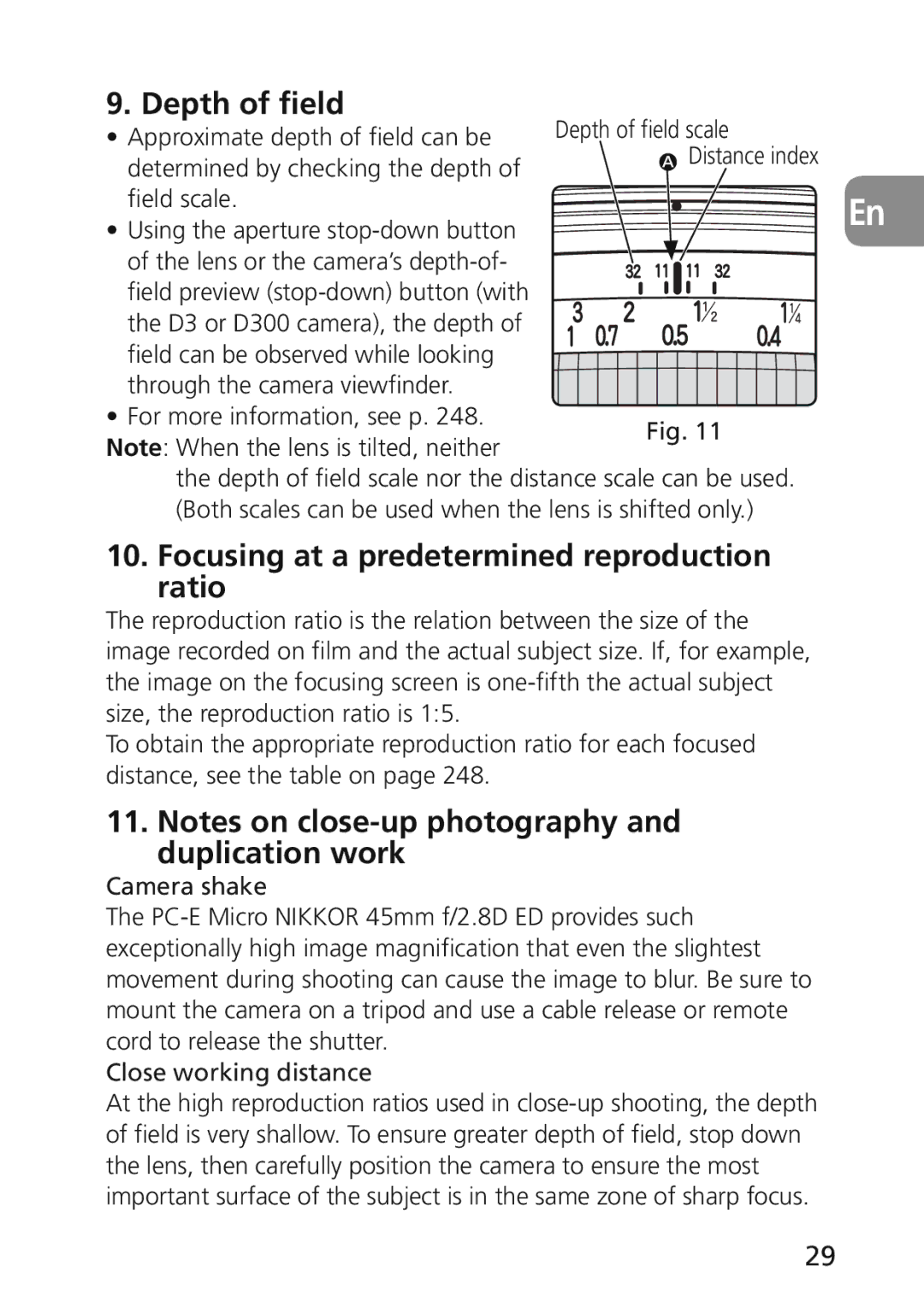
9. Depth of field
• Approximate depth of field can be | Depth of field scale |
|
A Distance index |
| |
determined by checking the depth of |
| |
|
| |
field scale. |
| En |
• Using the aperture |
| |
|
| |
of the lens or the camera’s |
|
|
field preview |
|
|
the D3 or D300 camera), the depth of |
|
|
field can be observed while looking |
|
|
through the camera viewfinder. |
|
|
• For more information, see p. 248. | Fig. 11 |
|
Note: When the lens is tilted, neither |
| |
|
| |
the depth of field scale nor the distance scale can be used. |
| |
(Both scales can be used when the lens is shifted only.) |
| |
10.Focusing at a predetermined reproduction ratio
The reproduction ratio is the relation between the size of the image recorded on film and the actual subject size. If, for example, the image on the focusing screen is
To obtain the appropriate reproduction ratio for each focused distance, see the table on page 248.
11.Notes on
Camera shake
The
Close working distance
At the high reproduction ratios used in
29
